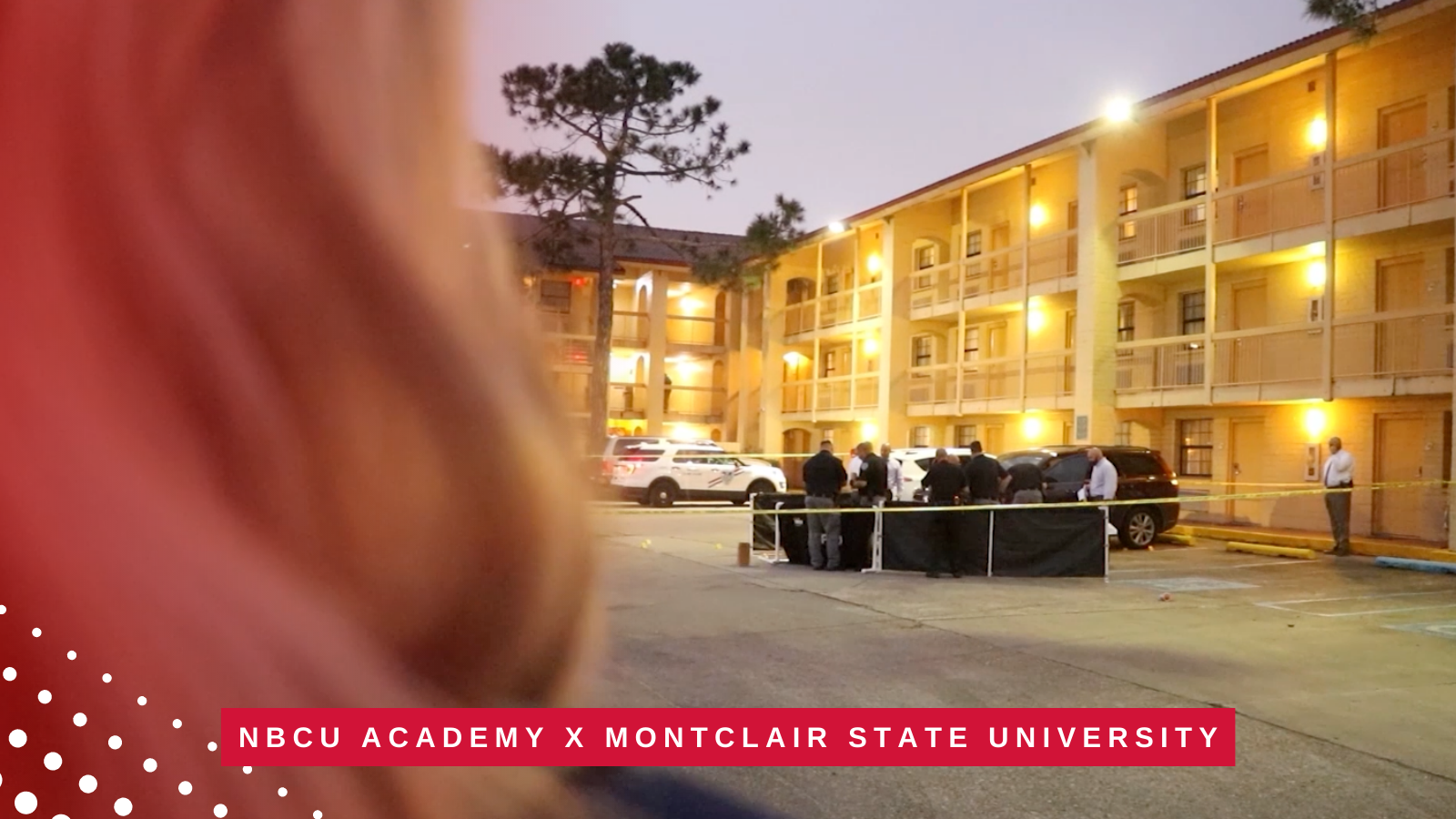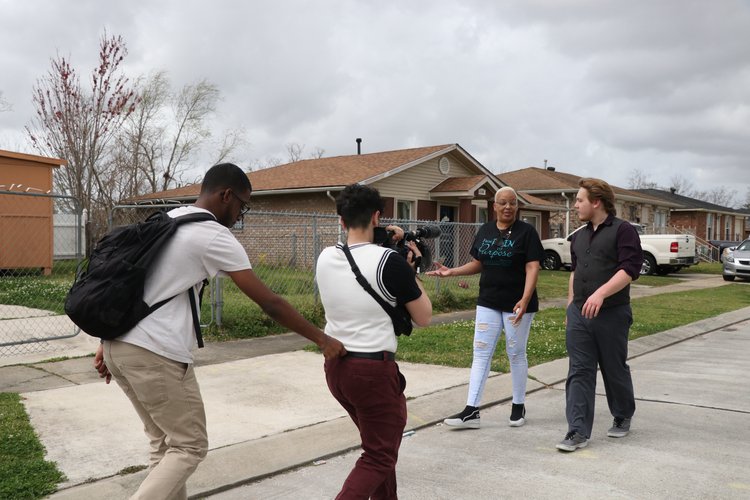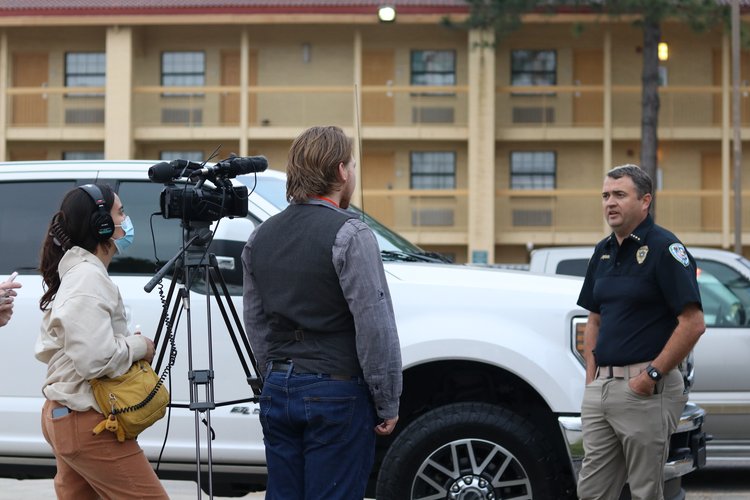
“Head of the Class” highlights original reporting and video from student journalists, in collaboration with NBCU Academy. The first in the series is Montclair State University’s “New Orleans: Raging Storms,” showing how climate change, racism and economic inequality have impacted the city since Hurricane Katrina.
U.S. murder rates have surged in the pandemic. As one of the deadliest cities in America, according to the FBI’s 2020 uniform crime report, New Orleans has felt the repercussions of this crisis.
To better understand what the community is facing, Montclair journalism students Michelle Coneo Fernandez and Drew Mumich traveled to the Louisiana city to shadow a crime reporter at a homicide scene, as well as talk to police, community activists and people who have lost loved ones to gun violence. Below, they discuss how their story came about.
How we ended up at a homicide scene
Coneo: Crime is no stranger to New Orleans news. Rather than repeat local headlines, we looked for the people eager for change — those affected by crime and those who have a say in legislation. We asked them why the violence is happening and what is being done about it.
Mumich: As we approached the trip, Michelle and I had press alerts to tell us about New Orleans news, and on average at least one or two crime stories were in the daily briefing. Michelle pitched covering crime, and I immediately wanted in. That afternoon, I sent emails out to breaking news reporters and police chiefs for leads while Michelle reached out to activists.
Coneo: I contacted Missy Wilkinson, a breaking news reporter for The Times-Picayune/New Orleans Advocate, who told me she had been a victim of a carjacking while on the crime beat. Drew asked Missy if we could ride along with her, so we could have a fast-paced interview in the field.
As our teacher dropped us off with thousands of dollars’ worth of video and audio equipment, I remember thinking: “OK, we’ve got to do this part on our own.”
It was Tuesday after Mardi Gras, almost no movement in the streets, and we weren’t expecting much to happen, so we decided to find something to eat near the news studio.
We were five blocks away from the newsroom chasing another possible element to our story when we got a phone call: a homicide in the suburbs of New Orleans. Missy asked if we wanted her to wait for us, and without hesitation, we ran back.
When I hung up, I could tell we had conflicting emotions. We weren’t hoping for something like that tragedy to happen, but we had to do our job.
I am not sure what I was thinking when we were in Missy’s car on our way to the homicide scene. Once we started recording, I went on autopilot and made sure to ask questions if something was missing.
The scene – police officers, a forensics team and a corpse on the ground with black banners around it – became a suitable beginning to what no longer felt like a school project. We saw New Orleans’ reality, we were professionals in the field, and we came back different individuals.
How we faced grief
Mumich: The heart of our story, Teresa Castle, a mother who has lost two generations of children to gun violence [unrelated to the crime scene mentioned above], had not confirmed her availability until hours before the interview.
We got to Teresa’s house. She was welcoming; her living room was a moving testimony to the son, stepson and grandson she had lost. There were prayer cards, candles, pictures reading “In remembrance of” and “Together again.” In the back was a large photo of her son Trammell Marshall, who was shot and killed in 2015, with Psalm 23 memorializing him. The grief sat like dust in an untouched room.
As Michelle and the crew set up, I watched playbacks of Trammell’s college football days, and Teresa proudly spoke about how good a player he was. She had the energy of a mother whose heart was shattered, because in reality, it was.
As a reporter, I had to ask her questions that would hurt her. “Tell me about the night your son was shot. Where he was shot? How do you feel all these years later?” Then I had to be silent as she cried on camera, because seven years later she is still mourning her son.
It was hard to fight every urge to tell her “It’s OK,” and comfort her with empty words. As she sobbed on the other side of the camera, the professional voice in my head said, in a clear and calm voice, “Shut up, you don’t want to ruin the shot.” That voice was right, of course.
This wasn’t my first time talking to a grieving mother, and it won’t be the last, but I don’t think it will get any easier. Maybe that’s a good thing.
A note from Coneo and Mumich: We want viewers to understand that Teresa Castle is one example of many mothers in New Orleans who have lost – or will lose – their children to gun violence. As journalists, we understand that while we are telling a story of grief and of the fight to prevent the loss of more lives, it is not truly our story. It belongs to the community members who are impacted and the mothers whose voices should be heard above all else.




